2022 Census in the field
Quilombo Maria Joaquina takes part in mobilization day for unprecedented census in Brazil
September 05, 2022 10h00 AM | Last Updated: November 01, 2022 01h55 PM
Highlights
- Located in Cabo Frio, approximately 170 km far from the capital of Rio de Janeiro, the quilombo was one of the places chosen for the official opening of the 2022 Population Census in quilombola communities from all over the country.
- The quilombo will welcome the Census with a sincerely open heart. It is so important for us to be enumerated!” (Jane, community leader)
- Enumerator João Gabriel de Souza estimates that data collection will take about a month. And says he is happy for the warm welcoming of residents.
- A total of 5,972 quilombolas localities and 2,308 settlements will be enumerated. They are part of 3,542 enumeration areas defined by the IBGE’s cartography department.
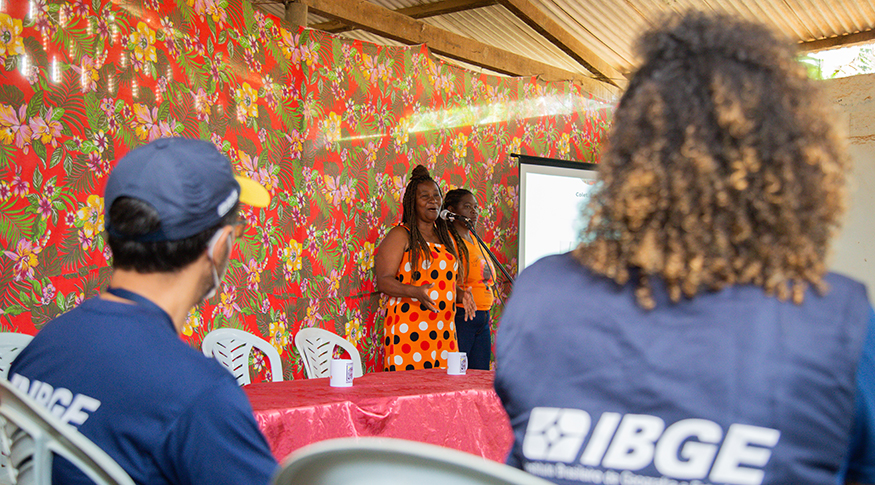
“Negro entoou/ Um canto de revolta pelos ares/ No Quilombo dos Palmares/ Onde se refugiou” (A black man sang/ a revolt song out loud/ At Palmares Quilombo where he had found shelter”). The iconic song entitled “Canto das Três Raças (Three Race Song),” by Mauro Duarte and Paulo César Pinheiro, in an unforgettable interpretation by Clara Nunes, was the sound heard in the simply, yet well decorated, ballroom of the Mario Joaquina Quilombo on August 17th. With samba and pagode music playing, the community welcomed IBGE representatives, teams from institutions such as the Land and Cartography Institute of Rio de Janeiro State (ITERJ) and the National Coordination of Rural Quilombola Communities (Conaq), and community residents on the Mobilization Day for the Quilombola Census.
Located in Cabo Frio, very close to the place called Armação de Búzios, at Região dos Lagos, and about 170 km far from the state capital, the quilombo was one of the sites chosen for the official opening of the nationwide quilombola census in 20220. On this ocassion the IBGE presented the methodology of the census operation in those areas in order to encourage participation by the quilombola population. For the first time in the Census history, the IBGE will have specific results for those territories. “That will be important for the establishment of public policies aimed at this population segment,” says the technical manager for the Census, Luciano Duarte.
The residents of such localities will have the opportunity to self-identify as quilombolas by answering the question “do you see yourself as a quilombola?”, which is part of the questionnaire adminstered in these communities only. In case of an affirmative answer (“Yes”), the system will ask a second question: “What is the name of your community?” The 2022 Census application has a list of pre-registered communities, but it will be possible to add quilombola comunities not previously listed.
With about 80 resident families, Maria Joaquina expects to have a one-month long data collection period
Mixed-breed dogs playing in non-paved streets represent a simple landscape, but one that is marked by a history of fight and resistance. The quilombola community is part of a huge territory, originally formed by Campos Novos Farm, which also encompasses the neighboring quilombolas of Rasa and Baía Formosa, in the municipality of Búzios, and of Botafogo, in the municipality of Cabo Frio. It is believed that farm owners received slaves even after slave trade had been abolished. The territorial dispute dates back to the settlement period: the quilombolas claimed to have received tha area as a donation from Jesuit priests who were expelled from the place.
The community was named Maria Joaquina after a slave trader. In “Social Cartography of QUIPEA (Quilombos in the Environmental Education Project)” which presents the history and geography of the community, the territory “incorporates the history of enslaved ancestors by adopting the name of an ancient slave trader, in order to represent resistance in their fight for freedom.”
Currently, about 80 families live in the location, divided into groups. João Gabriel de Souza, IBGE enumerator in the community and a resident of the José Gonçalves neighborhood estimates that the data collection work for the 2022 in Maria Joaquina will last about a month. And he says he is happy for the warm welcoming of residents. “I have already eunmerated some housing units and they were very kind to me.”

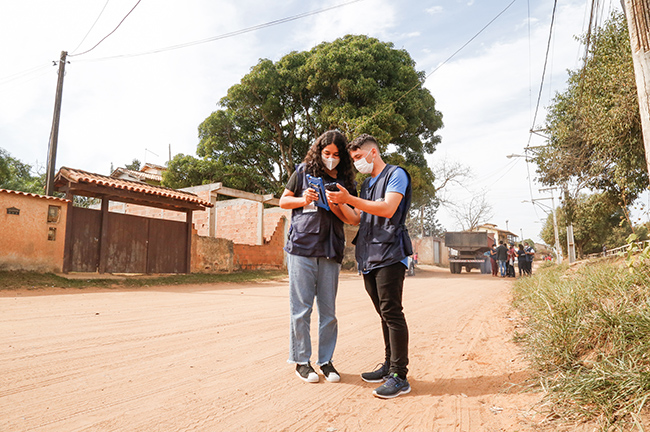


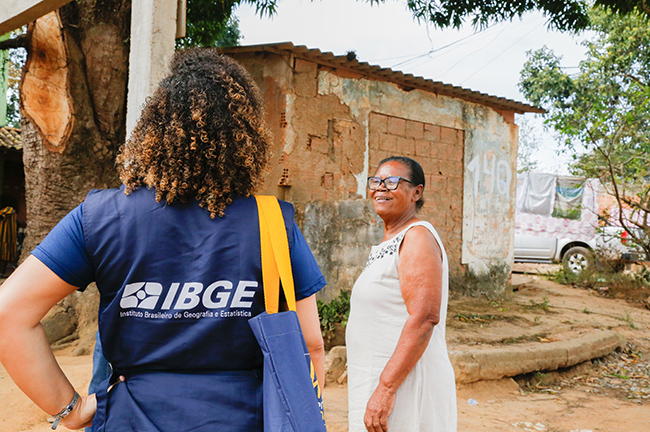



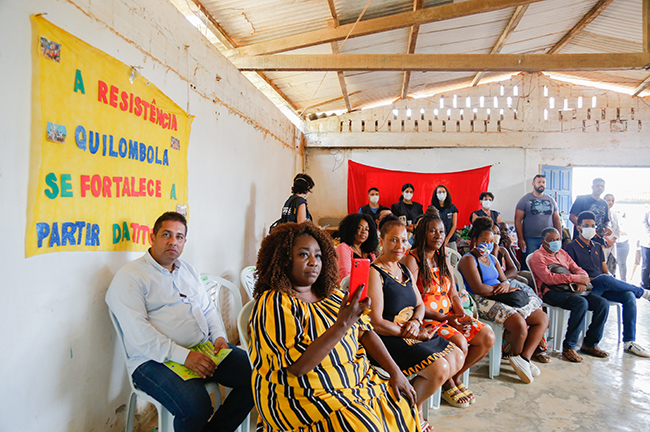
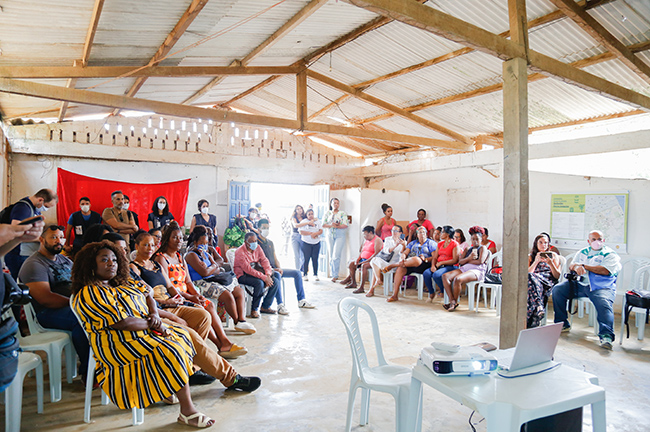
The enumerators snd other members of the 2022 Census team who work in quilombola territories went through a specific day of training, when they learned about legal regulations, concepts, territoril basis, planning, guidance on benaviors and approaches, besides the methodology adopted in questionnaires. Specific approach guides and a manual or the enumerator were also distributed to the agents who will work in these communities. Also, health protocols, such as absence of Covid-19 symptoms, use of masks and of hand sanitizer, will also be followed.
In order to guarantee data collection quality, the enumerator,try, first of all, to speak with local communities and have a meeting with them to explain what the 2022 Census is. In this meetig, they request help from community leaders and memebers in order to collect data.
In Maria Joaquina, enumerator João Gabriel will be helped by Clara Oliveira, a manicurist who will work as his guide in the locality. The work of a guide in the 2022 Census is to help in the enumerator’s safe visiting of all the housing units, by showing the best routes, the most appropriate times for visits and the behavior codes they should follow. “The community has open arms for the Census. We all see that as a victory, because we are being recognized once more. I hope I will be able to help.”
Rejane Maria de Oliveira, Jane, main leader of the community and a coordinator for Conaq, adds: “The quilombo will welcome the Census with a sincerely open heart. It is so important for us to be enumerated!” During the vaccination against Covod-19 we had a lot of difficulty having access to the vaccine and in knowing how many we were.”
Access to education, sanitation and health are reasons for maria Joaquina to eagerly await the survey results. “The Census will reveal our true story and evidence the lack of public policies here. It will show the portrait of a population that fights more and more for policies every day. And the real conditions of quilombola life in Brazil will be known,” Ms. Oliveira says.
She says the survey may help the quilombo obtain the awaited document granted by the National Institute for Colonization and Agrarian Reform (Incra). Maria Joaquina has been recognized by Palmares Foundation, but its territorial status has not been regulated by Incra. The legal action started in 2013 and its latest update was in July 2021.

Challenges to cartography in quilombola areas
One of the main challenges faced by the iBGE was to map the quilombola population. “Além dos territórios quilombolas oficialmente delimitados, informação que recebemos do Incra e dos institutos estaduais de terra, procuramos retratar também todas as comunidades quilombolas fora desses territórios e todas as localidades onde pode haver população quilombola residindo”, conta Marta Antunes, coordenadora do Censo em Povos e Comunidades Tradicionais.
A total of 5,972 quilombolas localities and 2,308 settlements will be enumerated. They are part of 3,542 enumeration areas defined by the IBGE’s cartography department. The officially delimitated territories will answer, mostly, the sample questionnaire (77 questions), so that it is possible to present information as detailed as possible with data on education, work, disability, and more information that is part of this questionnaire only.
Maria Amélia Vilanova Neta, a geographer at eh and member of the Work Group of Traditional Communities and Peoples for the 2022 Census spoke about all the preparation phases for the census operation in quilombla areas. She highlights that the IBGE followed the WTO’ Convention 169, which deals with the necessity of traditional peoples being consulted before being subject to administrative measures that have a direct impact on their lives, such as the Population Census.
“Consultation to local and regional leaders and to other bodies that work with quilombolas took place four times. Having a partnership with them was very important,” she adds. Vilanova says that both the construction of the question and all the work to be done counted on the help of other leaders. “And Maria Joaquina was one of the communities chosen for the rehearsal in 2017. It is a very important locality in this process.”
Results will help unify information, says Conaq
Conaq expects that the results released after the 2022 Census will strengthen quilombola communities in the process of granting rights to public policies, helping the institution obtain from institutions the inclusion of quilombolas in governmental practices.
According to the executive director of Conaq, Antônio Crioulo, currently, each institution, ministry or body has a different data set on the quilombola population. He hopes the 2022 Census will help unify these figures. “This proposal of obtaining information is extremely necessary because there is no high quality or enough amount of information on the quilombola population in Brazil. When the state acknowledges the existence of this population, they know how many families there are, thir members, commmunities, and, undoubtedly that will be the basis for the elaboratio of public policies,” Mr. Crioulo says.
“The release of results will also be discussed in the post-census step, in national meetings and workshops, in order to reach the best formats to help the quilombola population.”
Besides Maria Joaquina, other communities took part in the Day o Mobilization of the Quilombola Census in the five Major Regions of Brazil: Muquém Quilombola Community (AL), Ilha de Maré Quilombola Territory (BA), Mesquita Quilombola Territory (GO), a Comunidade Quilombola Soledade (MA), Guajará Miri Quilombola Community (PA), Forte Príncipe da Beira Quilombola Community (RO) Alpes Quilombola Territory (RS). All the communities are being visited by enumerators wearing uniforms - an IBGE vest, badge and cap. The information provided by informants will be kept secret and can be used for statistical purposes only.
Quilombolas living out of the territories can speak to the enumerator
Persons who self-identify as quilombolas, but who live outside the communities or territories not identified in the previous mapping, can speak to the enumerator about their condition. So, the IBGE will also have undercounting estimates of the quilombola population.



















